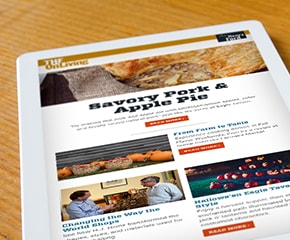
Highland Park Plant
20 artifacts in this set
Construction of Ford Motor Company Highland Park Plant, circa 1909
Photographic print
Ford Motor Company's Highland Park plant was nothing less than the most influential factory of the 20th century. Within its walls Henry Ford and his associates developed the moving assembly line, introduced the Five Dollar Day for workers, and produced millions of reliable and affordable Model T automobiles that put the world on wheels.
Milling Machine at the Ford Highland Park Plant, circa 1912
Photographic print
This machine milled the tops of Model T engine cylinder blocks. Rough block castings were loaded into the machine 15 at a time. The castings were then moved under spinning cutters that shaped the tops of the blocks. Four of these machines were used in this operation at Ford's Highland Park plant.
Machine Shop at Highland Park Plant, January 10, 1915
Photographic print
Machining Model T Ford engine blocks, ca. 1914. Fifteen engine block castings were loaded into large milling machines that made two cuts on the bottom of each block. The Highland Park machine shop was filled with such specialized machine tools. One of these machines is displayed in the Made in America exhibition in Henry Ford Museum of American Innovation.
Magneto Assembly at the Ford Highland Park Plant, 1913
Photographic print
The first Ford assembly line at the Highland Park, Michigan, plant was relatively crude. Here, in 1913, workers put V-shaped magnets on Model T flywheels to make one-half of the flywheel magneto. Each worker installed a few parts and simply shoved the flywheel down the line to the next worker.
Monorail Conveyor in Ford Motor Company Highland Park Plant Machine Shop, 1914
Photographic print
Ford Motor Company's assembly methods depended on the fluid movement of materials to workers. At its Highland Park plant, the company used an overhead monorail conveyor to carry parts around the factory. Each electrically powered car was driven by an operator riding in the cab. More than a mile and a half of track ran throughout the factory complex.
Ford Model T Assembly Line at the Highland Park Plant, 1915
Photographic print
On the chassis assembly lines, frames, axles, gas tanks, engines, dashboards, wheels, radiators, and bodies came together in that order to produce finished, running automobiles. In this view of installing the assembled dashboards, workers connect ignition wires, spark controls, and throttle controls to the engine, and connect the steering column to the tie rods on the front axle.
Workers Installing Pistons on Ford Model T Assembly Line at the Highland Park Plant, 1914
Photographic print
Two critical ingredients in Ford Motor Company's moving assembly line were interchangeable parts and the subdivision of labor. Each piston was exactly like another, so that any piston would fit perfectly in any Model T engine. One worker did not make a whole engine -- or even a whole piston. Each worker performed one step in an assembly process.
Car Body Assembly Line at Ford's Highland Park Plant, circa 1914
Photographic print
These workers install folding tops and side curtains to Model T bodies on a moving assembly line in Building H at Ford's Highland Park plant. By 1914, a Model T could be fully assembled in just over one and a half man-hours. The job took twelve and a half man-hours using stationary methods.
Loading Ford Model T Parts into a Boxcar at the Highland Park Plant, Detroit, Michigan, 1915
Photographic print
Four men load a Model T body into a boxcar at Ford Motor Company's Highland Park plant near Detroit. To save space, workers packed bodies and chassis separately. The boxcars belong to the Lake Shore & Michigan Southern Railway, a subsidiary of the New York Central Railroad.
1914 Ford Model T Touring Car Parked on Street
Photographic print
Ford Motor Company built more than 202,000 Model T automobiles in 1914. It was the last year for cherry-wood dashboards, and a cast-iron intake manifold replaced the previous aluminum unit. Behind the scenes, the moving assembly line was fully implemented in all stages of Model T production at Ford's Highland Park plant. Touring car prices started at $490.
Crowd of Applicants outside Highland Park Plant after Five Dollar Day Announcement, January 1914
Photographic print
Ford workers disliked the new assembly line methods so much that by late 1913, labor turnover was 380 percent. The company's announcement to pay five dollars for an eight-hour day compared to the previous rate of $2.34 for a nine-hour day made many workers willing to submit to the relentless discipline of the line in return for such high wages.
Ford Motor Company Highland Park Plant, 1913
Photographic print
The Highland Park Plant, shown here in 1913, is where Henry Ford would go on to perfect the assembly line process and institute the Five Dollar Day. In this photograph, the plant's exterior is teeming with some of its approximately 50,000 workers, while parked cars and a streetcar line show how these workers got to and from work.
This is user-generated content and does not reflect the views of The Henry Ford.


